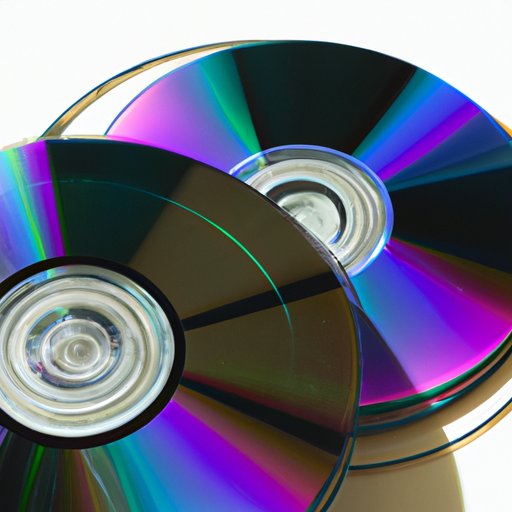Introduction
Compact Discs (CDs) are ubiquitous in modern society. They are used for everything from audio recordings to data storage and have become a mainstay for both commercial and personal use. But how does a CD actually work? This article will explore the technology behind this popular medium and provide a comprehensive look at the mechanics of how a CD works.
Overview of CD Technology
CDs are optical discs that are created by etching microscopic pits into a reflective polycarbonate layer. The reflected light off of these pits is converted into digital signals which can be interpreted as sound or data. A laser reads the information contained on the CD, which is then converted into analog signals and amplified in order to produce sound. CDs are able to store large amounts of data due to their high storage capacity and fast access time.

Explaining the Mechanics of How a CD Works
The primary component of a CD is the laser read head, which is responsible for reading the information contained on the CD. This read head contains a low power semiconductor laser diode which emits a beam of light onto the CD. The laser reflects off of the pits etched into the CD’s reflective layer and creates a pattern of 0s and 1s which are then translated into digital signals. These digital signals are then converted back into analog signals which can be amplified and heard as sound.
Examining the Different Parts of a CD
The outermost layer of a CD is made up of a thin layer of plastic polycarbonate which protects the CD from damage and scratches. Underneath this layer is the optical reflective layer which is made up of aluminum or gold particles. This layer is where the pits are etched onto the CD and is responsible for reflecting the laser light back off of the CD. Finally, the label side of the CD contains the label which identifies the contents of the CD.

Understanding the Process of CD Creation
Before a CD can be produced, it must go through a complex process of pre-mastering, mastering, and manufacturing. First, the pre-mastering process takes place, which involves transferring the audio from its original format (such as a tape or digital file) onto a master disc. This master disc is then used to create a glass master, which is then used to create a metal stamper. This stamper is then used to press the actual CDs.
Exploring Digital Audio Formats and Their Role in CDs
Digital audio formats play an important role in the production of CDs. The most common digital audio format used in the production of CDs is the Red Book Standard, which is a standard set by the Recording Industry Association of America (RIAA). This standard specifies the technical requirements for producing CDs, including the sampling rate, bit depth, and track length. Other digital audio formats such as MP3, AAC, WMA, and FLAC are also used to compress audio files and make them easier to store and transfer.
Investigating the Benefits and Limitations of CDs
CDs offer many benefits over other audio storage options. One of the most significant benefits is that they are physically durable and resistant to damage. Additionally, CDs have a long shelf life and can last for decades without deteriorating. However, CDs do have some drawbacks, such as the fact that they are susceptible to scratches and fingerprints, which can cause errors when attempting to read the CD.

Comparing CDs to Other Audio Storage Options
When comparing CDs to other audio storage options, there are both advantages and disadvantages to each. Vinyl records offer superior sound quality but are more prone to wear and tear, while cassettes offer convenience but lack the sound quality of CDs. Digital music files offer portability and convenience, but are not as durable as CDs. Ultimately, the decision of which audio storage option to use depends on the user’s preference.
Conclusion
CDs are a versatile and reliable medium for both audio recordings and data storage. By understanding the mechanics of how a CD works, we can better appreciate the technology behind this popular medium. From the laser read head to the pre-mastering, mastering, and manufacturing processes, CDs offer a variety of benefits over other audio storage options. The future of CD technology looks bright, as new innovations continue to expand the capabilities of this medium.
(Note: Is this article not meeting your expectations? Do you have knowledge or insights to share? Unlock new opportunities and expand your reach by joining our authors team. Click Registration to join us and share your expertise with our readers.)
